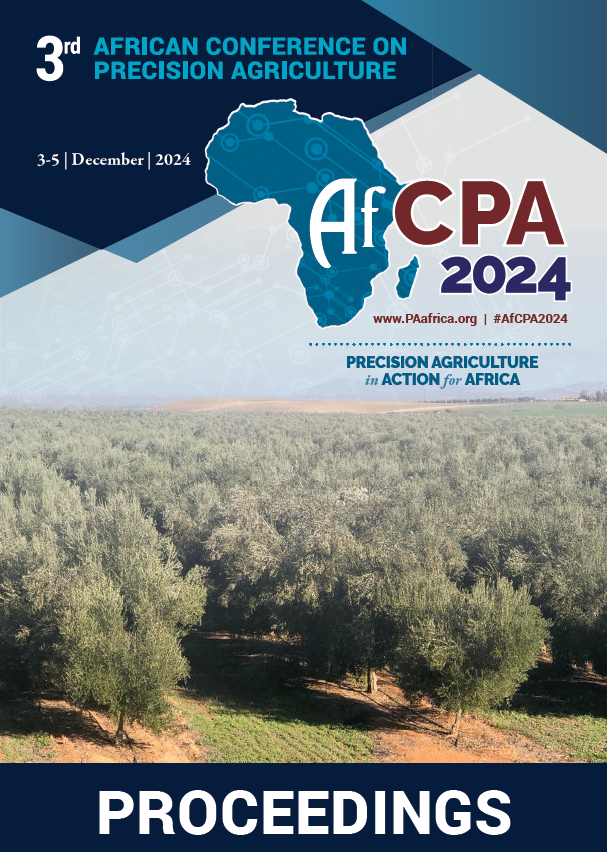Download the Conference Proceedings
Proceedings
Topics
| Filter results6 paper(s) found. |
|---|
1. Excellence in Agronomy 2030: A new CGIAR-wide initiative to deliver agronomy solutions at scaleRequired increases in crop production and productivity in sub-Saharan Africa (SSA) will not happen without the increased use of appropriate agronomic practices. While several thousand new varieties of nearly all key crops have been produced in the past decade, recent increases in yields in specific countries have only happened when such varieties received the right agro-inputs and management. That said, agronomy is often highlighted as an area that has not delivered impact at scale in SSA, or... B. Vanlauwe, T. Amede, F. Baudron, P. Chivenge, M. Devare, K. Saito, J. Kihara, V. Nangia, P. Pypers, K. Shepherd, E. Vandamme |
2. Decision Support System for Precision Agriculture management Case study : El Salihiya –east Nile delta, Egypt.Soil is a complex mixture of living organisms and organic material, along with soil minerals. the main objective of this work is develop a new methods to improve the agricultural management .The current study relies on developing a decision-making model for agricultural operations to manage potato crops in the El Salihiya area using field data,laboratory analysis and field sensor measurements. The precision agriculture decision support system entitled (EGYPADS) was designed and develop... A. Belal , S. abd el-kader, B. Mamdouh , M. A el-shirbeny, M. abdellatif1, M. Jalhoum , M. Zahran, E.S. Mohamed |
3. CropSAT – opportunities for applications in precision agriculture in AfricaThe present paper aims at describing the CropSAT system, a Sentinel-2-based interactive decision support system (DSS) that provides vegetation index (VI) maps free-of-charge all across the globe for different applications in precision agriculture. We summarize research results from the ongoing developmental process and pointing to opportunities for development and application in precision agriculture in Africa. The DSS was initially developed in a research project at the Swedish University of... O. Alshihabi, I. Nouiri, M. Mechri, H. Angar, K. Piikki, J. Martinsson, M. Söderström |
4. Application of precision agriculture technologies in grazing: example of goats browsing in forest rangelands of Northern MoroccoThe aim of this study was to characterize patterns of grazing behavior of goats in a Mediterranean forest rangeland. We conducted a one-year study in the Chefchaouen region, Northern Morocco, during two contrasting seasons (spring and summer) using new technological tools. Eight goats were simultaneously fitted with GPS collars and sensors for 3 days during each season. A calibration study and classification tree analysis were used to predict other grazing activities of goats (eating, walking... Y. Chebli, S. El otmani, M. Chentouf, J. Hornick, J. Cabaraux |
5. Crop monitoring and forecasting system based on cloud data and capabilitiesVarious systems for crop monitoring & forecasting, using satellite images and meteorological data, exist around the world. Their complexity differs from one system to another, according to the temporal and spatial scale and according to the objectives assigned to them. Among the well known are the European Monitoring Agricultural ResourceS system, the USDA system of the Foreign Agricultural Service, the Moroccan CGMS system, the Belgian CGMS system and the Chinese CropWatch system.&n... |
6. Using Decision Support Tool for Site Specific Nutrient Management in Maize Production in Ethiopia: The case of Nutrient ExpertThere are huge variabilities among farmers in terms of crop management practices, soil types and fertility status as well as climatic conditions all of which affects crop fertilizer requirement and yield. Despite these variations, farmers are using blanket/regional fertilizer recommendations, which does not consider the above-mentioned variabilities. As a consequence, farmers are either practicing over fertilization or under fertilization, both of which have undesirable consequences. Therefor... T. Balemi |
